Physical Properties
| Chemical Formula | NaNO3 |
| Appearance | White crystals |
| Melting Point | 308 °C |
| Density | 2.26 g/cm3 |
| Molar Mass | 84.9947 g/mole |
Tel: +91-265-4605854
Email: [email protected]
Sodium nitrate is the chemical compound with the formula NaNO3. This salt is also known as Chile saltpeter or Peru saltpeter. The mineral form is also known as nitratine, nitratite or soda niter.
It is a white solid which is very soluble in water. It is a colorless, odorless crystalline compound that closely resembles potassium nitrate (saltpeter or niter) in appearance and chemical properties. SN is soluble in water, alcohol, and liquid ammonia.
It is a preservative found in processed meats, such as hot dogs, bologna, salami, ham and other deli meats. This product prevents the growth of the bacteria that spoils meat and preserves the meat as a red or pink color. Sodium nitrate is not added to chicken or tuna, as there is no red color to preserve. There is some evidence that it also prevents botulism, although nitrites are more likely to be involved in that process. It is used in curing country ham because of the long aging time required.
This contains nitrogen which is important in the growth of plants. Too much nitrogen can delay the production of fruit and flowers, and too little can lead to stunted growth of the plant. The nitrogen from sodium nitrate fertilizers are immediately available to plant roots.
It is involved in a two-stage process for making chemically strengthened glass. The glass item is first immersed in a sodium nitrate bath which enriches the surface of the glass with sodium ions increasing the strength of the finished product. Chemically strengthened glass is resistant to scratching, and has improved impact and bending strength, as well as an increased temperature stability. It also breaks into bigger pieces than non-strengthened glass. It is useful for the aircraft canopy of some fighter aircraft and other situations where glass requires toughness and optical clarity. Sodium nitrate is also used for clarifying molten glass in the production of high-quality glasses.
It is listed as the inactive ingredient in a variety of eye drops, presumably as a preservative. It is often used as a nitrogen containing, control compound, rather than an active ingredient in medicine. In a 2005 medical study reported by the National Institute of Health, researchers found that low concentrations of nitrite provided protection against injury associated with heart attacks. The team compared the effects of nitrite versus control treatments of either saline or nitrate. Nitrate is similar chemically to nitrite, but it cannot convert to nitric oxide in the blood and therefore does not have the blood vessel dilating properties that nitrite does. In these studies, sodium nitrate had no effect.
It is an ingredient in rocket propellants. It is known to be used as a substitute for potassium nitrate in black powder propellant, though it’s performance is less. In re-crystallized or cast sugar rocketry, sodium nitrate is more difficult to work with, as it does not recrystallize well. As an ingredient in an explosive, sodium nitrate has several advantages. It is inexpensive, stable, non-toxic and non-poisonous. However, it does have a slow burn rate.
It is used in numerous industrial applications like:-
Details of SNDB Chemicals Sodium Nitrate can be found below.
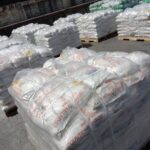
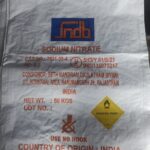
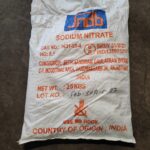
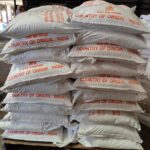
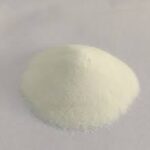
| Chemical Formula | NaNO3 |
| Appearance | White crystals |
| Melting Point | 308 °C |
| Density | 2.26 g/cm3 |
| Molar Mass | 84.9947 g/mole |
| Parameters | Unit | Grade II | Grade III |
| Assay (as NaNO3) | % min | 99 | 90 |
| Chlorides | % max | 0.35 | 5 |
| Heavy Metals(as Pb) | ppm | 50 | 50 |
| Nitrites (as NaNO2) | % max | 0.05 | 10 |
| Loss on drying | % max | 0.10 | 2 |
| pH of 5% soln | – | 5.5 – 8.5 | 5.5 – 8.5 |
| Calcium (as CaO) | % max | 0.05 | – |
| Water insoluble matter | % max | 0.15 | 5 |